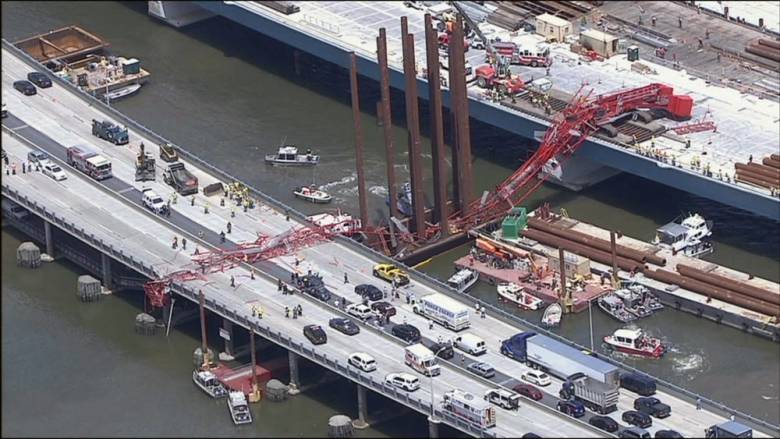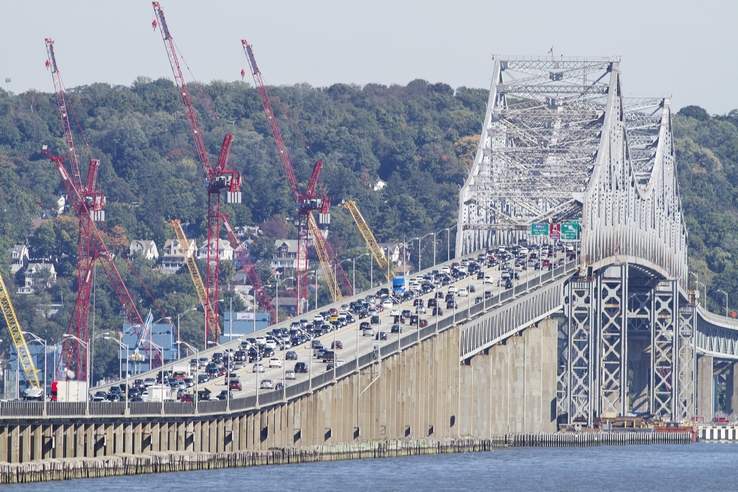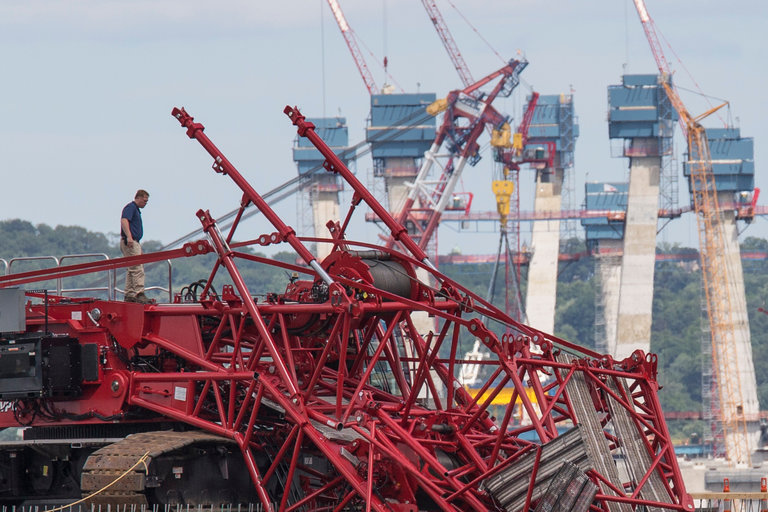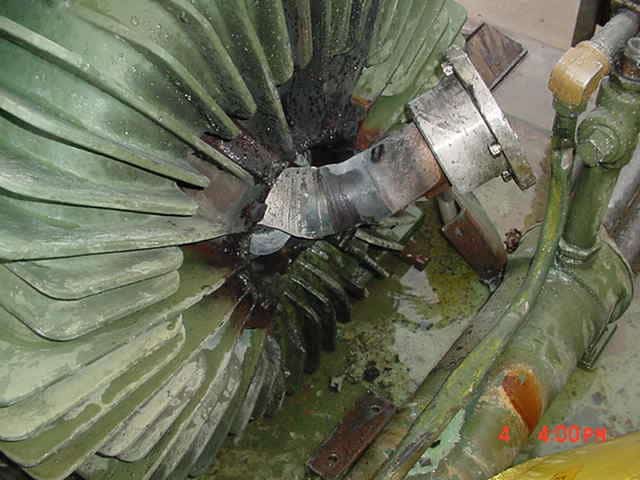Tappan Zee Crane Collapse: What We Know


Last week’s collapse of the 235 foot boom on a crane building the new Tappan Zee bridge is still under investigation. There are apparently 3 separate investigations in progress, and as expected, not much information has been released.
The boom came down across all lanes of traffic on the old (still active) portion of the bridge. Amazingly enough, there were only 4 minor injuries, and it cause direct damage to a single vehicle. If you’ve ever driven across that bridge (I was on it just 30 days before the incident), you understand how lucky we were not to have any fatalities.
What we know so far:
– There was almost no wind, and this has been eliminated as a cause.
– The crane was being used to drive piles into the river bottom using a 60 ton vibratory hammer.
– There is a “black box” on the crane which will supply data on the boom angle, weight, etc.
– The operator says he knows what caused it (it wasn’t him).
– This is a new model crane with several safety features designed to eliminate human error.
– This is the only crane of this model being used on the project.
– The crane operator is licensed, with over 30 years of experience.

This seems to be a good start to an investigation. And as expected, there are a lot of questions (and “expert” opinions) about what happened. Some of the questions that might be asked:
- Was the crane properly inspected and certified?
- What was the condition of the vibratory hammer?
- Was there any sense of urgency that may have caused someone to make a mistake? The contract specified $120,000 per day fine of the project finished late.
- Was there an adequate review and approval of the safe zone around the crane operation?
It’s important not to just ask the hard questions, but also to give the hard answers. For example, one option that could have been in place (20/20 hindsight) would be to close the operating section of the bridge during construction. While this would definitely have been 100% safer, does it actually make sense to do this? Were there adequate safeguards in place to allow continued use of the old span? The answers here might be yes, and it was perfectly appropriate to operate the old bridge during contruction. I’ve seen hundreds of construction projects that have cranes in near proximity to the public. In fact, almost every downtown construction project has the potential to cause injury to the public if a crane collapses. Some of the criticism I’ve seen written about this accident (“Why wasn’t the old span closed during this constructiuon project?”) is too simplistic for the real world. The real question should be, “Were there adequate safeguards put in place for the level of risk imposed by this projct?” We don’t know the answers yet, but just asking these questions in an unbiased investigation can provide useful information.

It appears that there is plenty of information available to the investigators. I’m very interested to see the results after the investigations are complete.



